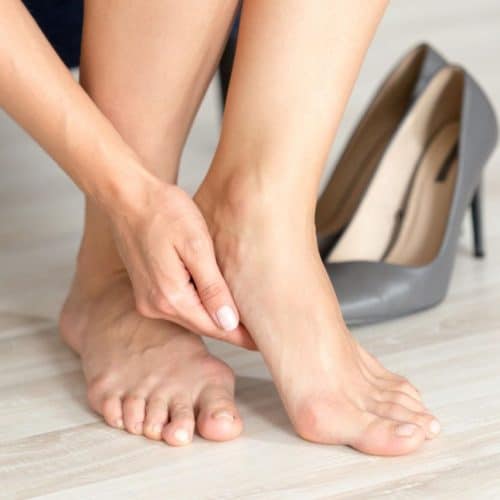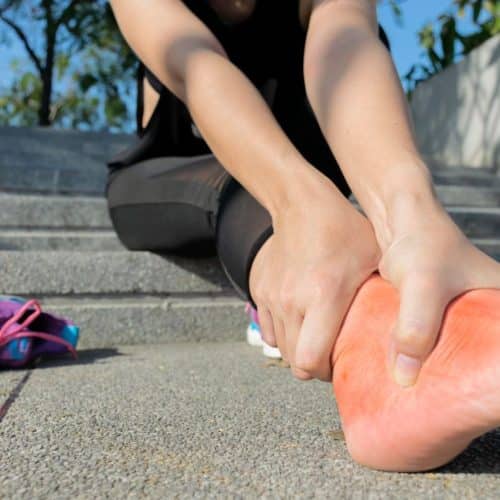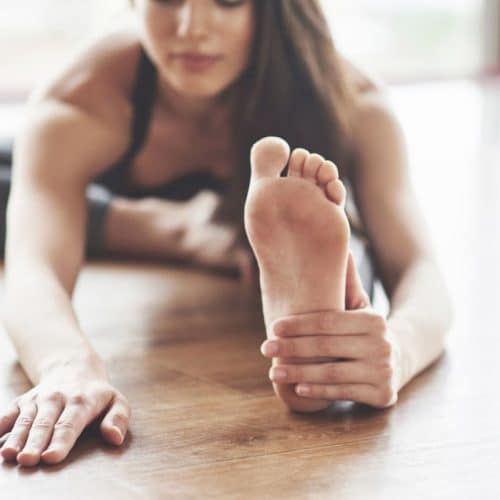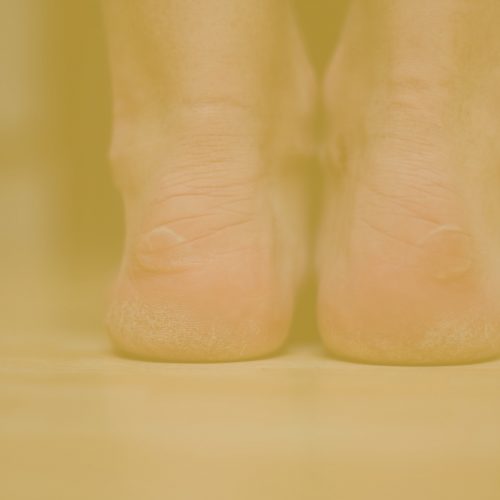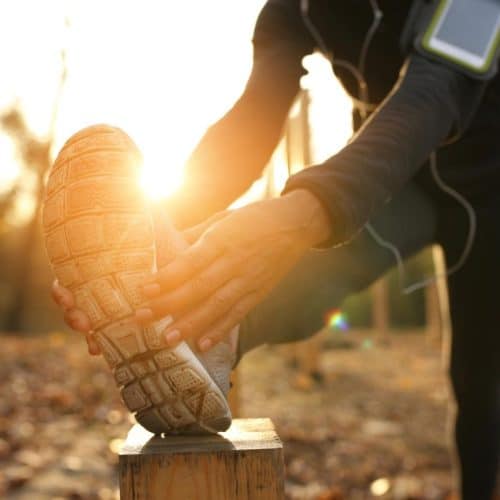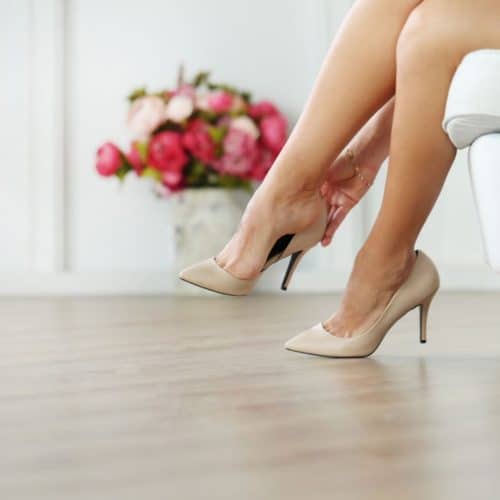Tendonitis of the Achilles is a common ailment that affects the Achilles tendon, the biggest tendon in the body and links the calf muscles to the heel bone. This ailment can be excruciatingly painful and incapacitating, but it is possible to manage it properly with the appropriate therapy and care. In this post, we will explore the many different treatment choices that are now accessible and share some more insights on this ailment.
What is Achilles Tendonitis?
Achilles tendonitis is an inflammation of the Achilles tendon. It’s often caused by overuse, especially in athletes and those who engage in high-impact activities. Symptoms include pain, swelling, and stiffness in the heel area, which can become more pronounced after exercise or upon waking up.
Treatment Options for Achilles Tendonitis
Achilles tendonitis, if left untreated, can lead to more severe complications, including the risk of tendon rupture. Therefore, it’s crucial to address the symptoms early and adopt a comprehensive treatment approach. Here are some of the most effective treatment options:
1. Adequate Footwear
- Importance: The right footwear is pivotal in managing and preventing Achilles tendonitis. Shoes that don’t fit properly or fail to provide adequate support can exacerbate the condition.
- Recommendation: Opt for shoes with good arch support, cushioning, and a slightly raised heel. This can help distribute pressure evenly and reduce strain on the tendon.
2. Heel Lifts
- Importance: Heel lifts can be especially beneficial for those with a shorter Achilles tendon or those who have developed tightness in the tendon over time.
- Recommendation: These inserts can be placed inside the shoe to elevate the heel, reducing tension on the Achilles tendon. They can be purchased over the counter or custom-made for a better fit.
3. Home Exercise Program
- Importance: Regular exercise can help strengthen the calf muscles, reducing the load on the Achilles tendon.
- Recommendation: Engage in gentle stretching and strengthening exercises, focusing on the calf muscles and the Achilles tendon. A physiotherapist can provide guidance on specific exercises tailored to individual needs.
4. Shock Wave Therapy
- Importance: This non-invasive treatment uses sound waves to promote healing within the tendon.
- Recommendation: Considered effective in 70 to 80 per cent of Achilles tendinopathy cases, it’s essential to consult a specialist to determine if this therapy is right for you.
5. Orthotic Therapy
- Importance: Misalignment in the foot can contribute to undue stress on the Achilles tendon.
- Recommendation: Custom-made orthotics, designed based on an individual’s foot structure, can provide the necessary support and alignment, alleviating strain on the tendon.
6. Foot Mobilisation Therapy
- Importance: This hands-on therapy aims to improve foot and ankle mobility, addressing any restrictions contributing to tendonitis.
- Recommendation: Seek a trained therapist who specialises in foot mobilisation techniques to ensure the best outcomes.
7. Tool-Assisted Massage
- Importance: Over time, scar tissue can develop in the tendon, limiting mobility and causing pain.
- Recommendation: Tool-assisted massage, often using instruments like the Graston Technique, can help break down this scar tissue, promoting better blood flow and faster healing.
In addition to these treatments, it’s essential to recognise the importance of rest and avoiding activities that exacerbate the pain. Combining multiple treatment modalities under the guidance of a healthcare practitioner can offer the best chances of recovery and prevent recurrence.
Prevention Matters
While treatment options for Achilles tendonitis are effective, preventing the condition from occurring in the first place is always the best approach. The Achilles tendon, the largest tendon in the body, plays a crucial role in our mobility, and taking proactive steps to protect it can save us from pain and potential complications. Here’s how:
1. Regular Stretching
- Importance: Keeping the calf muscles and Achilles tendon flexible can reduce the risk of overstraining the tendon.
- Recommendation: Incorporate daily stretches, especially before and after physical activities. Gentle calf stretches with a straight and bent knee can effectively target the different calf muscles and the Achilles tendon.
2. Gradual Increase in Activity
- Importance: Sudden increases in physical activity can shock the tendon, making it more susceptible to injury.
- Recommendation: Do so gradually, whether you’re taking up a new sport or increasing your workout intensity. This allows the tendon to adapt to the increased demands safely.
3. Wearing the Right Footwear
- Importance: Shoes that don’t properly support or align the foot can place undue stress on the Achilles tendon.
- Recommendation: Choose shoes that fit well, offer good arch support, and have adequate cushioning. For athletes, it’s essential to replace sports shoes regularly as worn-out shoes lose their supportive qualities.
4. Cross-Training
- Importance: Engaging in the same activity repetitively can overwork specific muscles and tendons.
- Recommendation: Mix up your exercise routine. For instance, consider incorporating swimming or cycling into your regimen if you’re a runner. This diversification reduces the continuous strain on the Achilles tendon.
5. Maintaining a Healthy Weight
- Importance: Carrying extra weight can strain the Achilles tendon, especially during weight-bearing activities.
- Recommendation: Adopt a balanced diet and regular exercise routine to manage weight. Even small reductions in weight can significantly decrease the load on the tendon.
6. Listening to Your Body
- Importance: Pain is the body’s signalling that something is amiss.
- Recommendation: If you experience discomfort or pain in the Achilles region, it’s essential to rest and avoid aggravating activities. Pushing through the pain can lead to more severe injuries.
Early Intervention
When it comes to Achilles tendonitis, getting treatment as soon as possible is of the utmost importance. When the earliest signs of an illness are recognised and treated, it is possible to prevent the ailment from developing into a more serious and ongoing problem. When people start to feel discomfort, stiffness, or soreness in the area of the Achilles tendon or the heel, it is a clear indicator that the tendon is stressed.
You must seek professional medical counsel rather than trying to tough out the discomfort or brushing it off as a small annoyance. A correct diagnosis and an individualised treatment strategy can be formulated after conferring with a podiatrist or other healthcare practitioner. This preventative strategy not only speeds up the healing process but also lowers the likelihood that further issues, such as a tendon rupture, would arise.
In addition, early therapy frequently involves less intrusive approaches, which enables a speedier return to routine activities after the procedure. The treatment of Achilles tendinitis in a timely manner enables a more successful and rapid recovery, highlighting the old adage that “prevention is better than cure.”
Rest and Recovery
Rest and recovery are pivotal in Achilles tendonitis’s healing process. The body has an innate ability to repair and rejuvenate itself, and giving it the necessary time to do so can significantly expedite healing. When the Achilles tendon is inflamed or strained, continuing to engage in strenuous activities can exacerbate the injury, prolonging recovery and potentially leading to more severe complications.
Taking a step back and allowing the tendon to heal is not just about physical rest. It’s also about providing the body with the right conditions for recovery. This includes elevating the affected foot to reduce swelling, applying ice to alleviate pain and inflammation, and, if recommended by a healthcare professional, using anti-inflammatory medications.
Moreover, recovery doesn’t mean complete inactivity. Gentle movements and stretches, under the guidance of a physiotherapist, can maintain flexibility and promote blood flow to the injured area, aiding in faster healing. It’s a delicate balance between rest and controlled activity, ensuring that the tendon is not overburdened during its healing phase.
In the broader perspective, rest and recovery are not just physical processes. They’re also mental and emotional ones. Recognising the importance of taking a break, listening to one’s body, and being patient with the healing process can make the recovery journey smoother and more effective. After all, a well-rested body is more resilient and better equipped to handle future physical challenges.
Conclusion
In conclusion, Achilles tendonitis, despite the fact that it is painful, may be treated. Individuals are able to return to their usual activities pain-free if they are provided with the appropriate care, counselling, and treatment alternatives. When dealing with diseases of this nature, you should prioritise your health and always seek podiatrists’ counsel.



